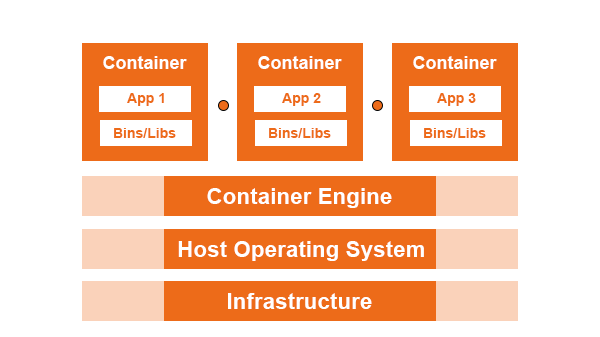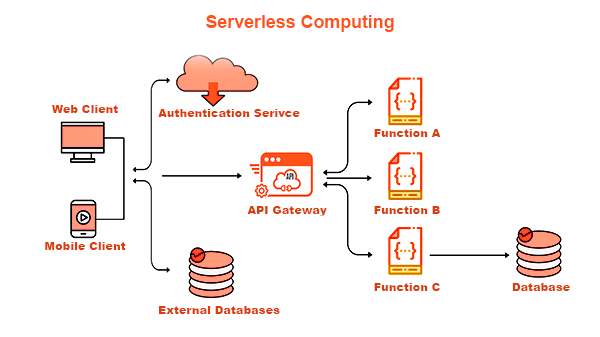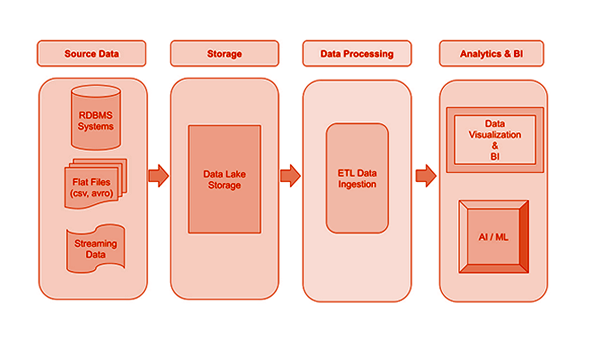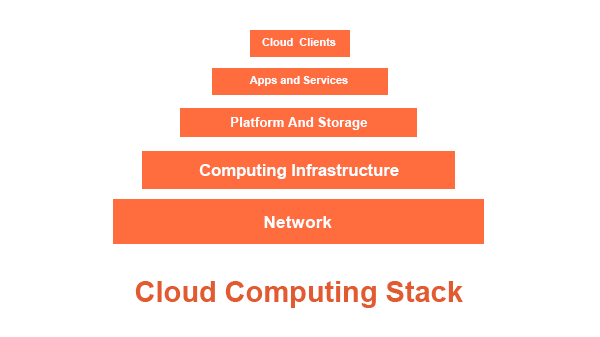Serverless and containers are two modern approaches to deploying and managing applications on the cloud. Serverless computing is not necessarily a replacement for containers. In some instances, Serverless can be used alongside containers, complementing each other in a hybrid deployment strategy.
Serverless computing (such as Alibaba Cloud Function Compute) is a cloud computing execution model where the cloud provider dynamically manages the allocation of computing resources, allowing developers to build and run applications without worrying about infrastructure management. Serverless enables automatic scaling and cost efficiency, as you only pay for the computing time you consume.
On the other hand, containers are lightweight, portable units that package applications and their dependencies, making it easy to deploy and run them consistently across various computing environments. Containers enable better resource utilization, faster deployment, and easier application management.
While containers and Serverless computing share some similarities, they cater to different use cases. If your application requires more control over its hosting environment and depends on complex or custom configurations, containers may be a better fit. On the other hand, Serverless computing is ideal for applications that need to handle sporadic or event-driven workloads, where the focus is on simplicity and rapid scaling.
Serverless computing and containerization can both significantly impact the success of online businesses. The choice depends on the specific needs and goals of the business.
Let's take a closer look.
Containers represent cutting-edge virtualization technology, streamlining the process of packaging, distributing, and deploying applications. Containers encapsulate applications and their dependencies within self-contained, portable environments, ensuring consistent and reliable execution across various computing settings. This lightweight virtualization architecture shares system resources with the host server, optimizing efficiency and performance compared to traditional virtual machines.
A container bundles an application, runtime, system tools, libraries, and settings into a stand-alone, executable package, which can be constructed using multiple container images. For example, an application may be comprised of a web server, application server, and database, each running in a separate container. Container engines rely on these images to specify the exact content and configuration of the container.

The innovative concept of constructing and aggregating images impacts development and operational management and shapes the understanding of businesses. As images are immutable, containers executed from the same image are identical and do not contain any state information or persistent data. External databases and filesystems are utilized to ensure persistence, resulting in a clear distinction between the application's runtime environment and the data it processes. This functional separation enhances process management and security.
Containerized applications are portable and can be moved seamlessly between hosts, given that the host supports the container runtime. This portability facilitates frictionless application deployment, eliminating concerns over application configuration or environment variables. Containers can also be linked together, allowing separate applications to operate as if installed on a single machine.
Container orchestration platforms, such as Alibaba Cloud Container Service for Kubernetes (ACK), automate the scheduling, development, networking, scaling, health monitoring, and management of containers, simplifying the handling of the underlying infrastructure.
Serverless computing represents a paradigm shift in cloud computing, emphasizing the automatic provisioning, scaling, and management of infrastructure to execute applications or services. Developers focus on building and deploying code while the cloud provider manages resource allocation (such as computing, storage, and networking) by abstracting the underlying infrastructure.
In 2020 alone, Alibaba Cloud Serverless products reached 66% of Serverless Users in China.
Serverless computing promotes a clear distinction between infrastructure and application components, introducing two key concepts in cloud computing: FaaS, which offers an event-driven execution environment for applications, and Backend as a Service (BaaS), enabling third-party delegation of typical application functions, such as identity management and authentication.
Functions as a Service (FaaS) is commonly associated with Serverless computing, providing developers an environment to write and deploy functions triggered by specific events (like HTTP requests or message queue events). Stateless by nature, these functions do not maintain information between invocations. FaaS platforms automatically scale instances based on incoming event traffic, efficiently managing varying workloads.
On the other hand, Backend as a Service (BaaS) allows developers to delegate the typical functions of an application to third-party service providers without implementing them personally. BaS providers offer pre-built functionality for features (such as push notifications, file storage, user authentication, database management, and more. BaaS allows developers to focus on writing the application's frontend code without worrying about the backend infrastructure.
Serverless functions, often lightweight and single-purpose, can be executed on-demand on a system owned and maintained by a third party. These functions are triggered by events (such as file uploads, monitoring alerts, and HTTP requests). Billing in Serverless computing is typically based on executions and resource consumption, providing cost-effective and efficient resource allocation.

Despite the name, Serverless applications run on servers, but they are managed by the cloud provider, not the developer. The Serverless model simplifies application deployment and management, removing the need for provisioning or managing traditional servers. This approach is more straightforward than containerization and can be more cost-effective but may be less flexible and efficient in some cases.
As Serverless computing evolves, hybrid approaches have emerged, blending the simplicity of Serverless with the control provided by containers. This combination seeks to maintain the benefits of both paradigms while addressing their respective limitations.
Serverless computing is well-suited for a variety of use cases, particularly those that benefit from event-driven execution, rapid scaling, and cost efficiency. Some common Serverless use cases include:

Containers are widely used in cloud computing due to their lightweight nature, portability, and ease of management. Some common use cases for containers include:
Serverless computing offers numerous benefits, but it comes with tradeoffs that need to be considered when deciding whether to adopt it for a specific application or use case. Some of the key tradeoffs include:
Serverless functions can experience higher latency during the first execution (known as cold starts) as the cloud provider provisions resources and initialize the runtime environment. This can lead to inconsistent performance, particularly for latency-sensitive applications.
Serverless functions are inherently stateless, which can make it challenging to build stateful applications or services. Developers must rely on external storage or caching services to manage the state, which can introduce additional complexity and potential points of failure.
When using a Serverless platform, you may become tied to the specific event models, APIs, and services of the cloud provider, making it more challenging to migrate to another provider or platform. This can increase dependency on a single vendor and reduce flexibility.

Serverless functions are subject to resource limitations (such as execution time, memory, and CPU). This can be a constraint for resource-intensive or long-running tasks, which may not be suitable for Serverless platforms.
While Serverless platforms offer a pay-as-you-go model, costs can be difficult to predict due to the granular, per-invocation billing. This can lead to unexpected costs, especially for applications with variable or unpredictable workloads.
Containers offer many advantages in cloud computing, but they also come with tradeoffs that need to be considered when deciding whether to adopt them for a specific application or use case. Some of the key tradeoffs include:
Containers simplify the deployment of applications and can introduce additional management overhead, particularly when it comes to orchestration, scaling, and monitoring containerized applications. This may require the adoption of new tools and practices (such as Kubernetes for container orchestration).
Containerization can add complexity to the development and deployment process, particularly when adopting microservices architectures. Developers and operations teams need to be familiar with container management, orchestration, and networking to effectively work with containerized applications.
Containers can introduce networking complexities due to their ephemeral nature and the need for service discovery, load balancing, and communication between containers. This may require the adoption of new networking solutions and best practices.
Read: From Serverless Containers to Serverless Kubernetes
Some of the common similarities between Serverless and containers include:
Containers and Serverless are two distinct approaches to deploying and managing applications on the cloud. Each has a set of advantages and disadvantages. Here are some major differences between containers and Serverless:
| Serverless | Containers |
| Function-based | Application-based |
| Event-driven | Process-driven |
| Stateless | Stateful or Stateless |
| Automatic scaling | Manual scaling |
| Billing by usage | Billing by resources |
| Limited control | Full control |
| Short execution time | Long execution time |
| No upfront infrastructure costs | Upfront infrastructure costs |
| Suitable for small and independent functions | Suitable for complex and interconnected applications |
| No need to manage infrastructure | Requires management of underlying infrastructure |
| More efficient resource allocation | Resource allocation can be less efficient |
Choosing between Serverless and containers for your application depends on several factors, including your specific business needs and application requirements. Here are some key considerations to help you make a well-informed decision:
Serverless is ideal for event-driven applications that execute discrete functions in response to specific triggers (such as API requests, database updates, or file uploads). Such an example could be some of the AI applications coming to market in recent times, which only require compute resources on demand when requested.
On the other hand, containers are better suited for complex, multi-tier applications that require greater flexibility and control over the underlying infrastructure (such as applications under constant load).
Serverless can scale automatically and is generally more cost-effective than containers because you only pay for the actual usage of resources. Containers require more management and cost more due to the need to manage and maintain the underlying infrastructure.
Serverless can have higher latency than containers because it involves the dynamic creation and execution of code, whereas containers provide consistent performance due to their dedicated and persistent nature.
Serverless requires less management and maintenance than containers, allowing developers to focus more on code development and less on infrastructure management. Containers require a more involved DevOps workflow that involves managing the infrastructure, containerizing the application, and managing container orchestration.
Serverless can be more prone to vendor lock-in since each provider has its proprietary platform and architecture. Containers provide greater flexibility in this regard, as they can be run on any infrastructure with a compatible container runtime.
Although it is important to note that combining Serverless and containers can add complexity, management overhead, and cost. Serverless and containers can complement one another.
Many organizations are adopting a hybrid approach where they use both Serverless and containers to take advantage of the benefits of each.
One way to combine Serverless and containers is by using Serverless functions to trigger containerized applications. For example, a Serverless function could be triggered by an event (such as a file upload) and then use a containerized application to process the data. This approach allows for the scalability and cost-efficiency of Serverless functions while also enabling the use of custom libraries and more control over the underlying infrastructure provided by containers.
Another way to combine Serverless and containers is by using containers to host the infrastructure required for running serverless functions. This approach can help reduce the cold start time of Serverless functions, improve their performance, and provide more control over the underlying infrastructure. Additionally, containers can be used to provide a consistent development and deployment environment for Serverless functions.
As mentioned above, Alibaba Cloud Hybrid Cloud Solutions enable cloud developers to leverage a mix of on-premises and off-premises cloud resources (including virtualization and containerization technologies) to design, deploy and manage cloud applications with high availability, scalability, and security.
Alibaba Cloud enables both Serverless and container architectures. It provides various cloud computing services (such as Function Compute (FC) for Serverless computing, Elastic Container Instance (ECI), Container Service for Kubernetes (ACK), and Container Registry for container-based computing). These services enable customers to choose the architecture that best suits their needs and provides flexibility in deploying and managing their applications.
1 posts | 0 followers
FollowAlibaba Clouder - February 11, 2021
Alibaba Cloud Community - December 21, 2021
Alibaba Clouder - December 18, 2017
Apache Flink Community China - September 15, 2022
Alibaba Container Service - April 28, 2020
Alibaba Clouder - March 14, 2019
1 posts | 0 followers
Follow ACK One
ACK One
Provides a control plane to allow users to manage Kubernetes clusters that run based on different infrastructure resources
Learn More Microservices Engine (MSE)
Microservices Engine (MSE)
MSE provides a fully managed registration and configuration center, and gateway and microservices governance capabilities.
Learn More Container Service for Kubernetes
Container Service for Kubernetes
Alibaba Cloud Container Service for Kubernetes is a fully managed cloud container management service that supports native Kubernetes and integrates with other Alibaba Cloud products.
Learn More Serverless Workflow
Serverless Workflow
Visualization, O&M-free orchestration, and Coordination of Stateful Application Scenarios
Learn More